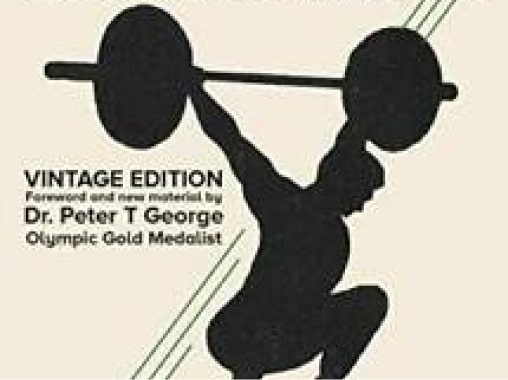November 7, 2019 – If one looks at the history of sport, one can see that most changes in training methods and technique occur in a gradual way, as athletes and coaches figure out better methods of training and competing. But occasionally, there are changes that truly qualify as revolutionary. One example is the invention of the “Fosbury Flop” in high jumping. When Dick Fosbury won the Olympics in 1968, using the style he invented, no one else at such a high level was using it and only a handful were using it at all. However, within a ten years, most high level athletes were using Fosbury’s method (it was obviously the complete opposite of a “flop” when it comes to its adoption as the prevailing style).
Today’s weightlifters and their coaches may not be aware that a similar revolution occurred in the sport of weightlifting in the 1950’s, wherein the then dominant split style in the snatch (and clean) was replaced by the squat style. And today the squat style in the snatch and clean is used by weightlifters throughout the world, virtually without exception.
What was the cause(s) of this revolution in the sport of Weightlifting? it would hard to find a more influential one than the 1950 publication of a book called “Secrets of the Squat Snatch”, by Larry Barnholth. Larry and his brothers, Lewis and Claude, had been involved in the sport of weightlifting since at least the 1920s, first as athletes and then as coaches. They initially used the split style in their lifting. But when the world renowned German weightlifting team visited the US in the late 1930s, the brothers noted that many of the German’s were using the squat style in the snatch (Germany, and Austria, were the only nations in the world widely using the squat style at that time). Yet, while the Germans had many of the best lifters in the world, and many of them used the squat style in the snatch, they were not considered as outstanding in the snatch as they were overall, and many of the Germans who used that style squatted on their toes – a very precarious position.
By the time the Barnholth brothers returned to their Akron gym, after watching the German team perform, they had reached two major conclusions: 1) the squat style offered enormous potential because when using the squat style the athlete didn’t have the pull the bar as high to snatch it as was necessary when using the split style, but, 2) the squat style would only become widely used if a way to make it more consistent was invented, along with a method for teaching it. Larry and his brothers immediately went to work on this problems, and by the early 1940s had solved them. By that time, they were able to teach essentially all the lifters in their club how to use the squat style effectively. As a result, the brothers likely had more lifters in using the squat style in their club than all other clubs in the US combined.
And not only did they have more lifters using the squat style, but their lifters were winning with that style. The Barnholth’s weightlifting club, The “American College of Modern Weightlifting”, won the Ohio State Team Championships in 1943 and continued to do so for many years thereafter, virtually all of the club’s lifters used the squat style. Concurrent with that success, a “boy wonder” named Pete George came under the Barnholth’s tutelage. He would go on to become a National Champion in 1946, at the age of 16, then become a World Champion at age 17. He also set multiple National and World Records using the squat style developed and taught by the Barnholths (Pete would eventually add multiple World Championships and a Gold Medal at the 1952 Olympic Games to his resume). Coincidentally, there were three George brothers, just as there were three Barnholth’s, and all three George brothers were to achieve national or international prominence in weightlifting, using the teachings of the Barnholths.
As Pete became known nationally and internationally for his prowess, interest in the new (and apparently much more stable) style of squat lifting that he used grew as well. Questions flooded in from all over the country, even the world, on how to do and learn the style Pete and his teammates used. Pete tried to persuade Larry to write a book on the subject, but it was hard to interest Larry in the project. So Pete offered to ghost author the book and print it on the printing press Pete and his brothers had in their basement (Peter was originally a journalism student in college, before he switched to pre-med). 1000 copies of the book were printed. Two of the first purchasers of the book were Tommy Kono and Dave Sheppard. They both paid Larry for a copy of his forthcoming book at the 1950 Nationals, and were therefore among the first to receive copies of the it. Both clearly put the instructions contained therein to great use, each becoming world recordholders using the squat style In the snatch (and clean). The 1000 copies of the book were eventually sold out, and it was never reprinted in Larry’s lifetime.
The “Secrets” book was revolutionary not only for the style it taught, but for the detailed way in which it taught that style. To my knowledge, no previously published instructional approach and/or book on a weightlifting exercise had ever provided anything close to the comprehensiveness of the Barnholth system, or the detail and clarity in which that system was presented. Of course Larry deserves full credit for the development of his system, but one must also give enormous credit to his pupil, Pete George, who so brilliantly explained the Barnholth system in this pathbreaking book.
The book starts by clearly explaining what a snatch, is under the then current rules. Then it describes the kind of shoes you should wear (e.g., with heels – there were no weightlifting shoes, at least not in the US) in those days. It goes on to talk about such important details as the trunks or sweatpants you should use, and the kind of bar you need (at least 6’ in length).
Then it explains how to select your grip and develop sufficient shoulder flexibility to begin to train on the squat snatch (the explanation includes an objective test to determine if your shoulder flexibility is sufficient for you to begin learning the snatch). A series of progressions are then introduced, beginning with the overhead squat – about which many details are provided Then details are presented about subsequent drills to be performed and how to determine when satisfactory results in them have been obtained, so that one can move on in the progressions. There is even advice on how to save a lift that is a little out of the groove and how to miss. Because the book was written in an era when touching the legs with the bar was not permitted, the pulling style described would not be optimal under today’s rules. But almost all of the rest of the book has stood the test of time, despite its being nearly 70 years old.
Overall, the Barnholth style, and the “Secrets” book that taught it, was an achievement of staggering proportions. Everyone who ever does a squat snatch should take a least a moment to mentally thank Larry Barnholth and Pete George for their gift to our great sport.
For those who have in interest in learning just what the book is like, I’m happy to report it is once again available, through Amazon, listed as Secrets of the Squat Snatch by Peter George.


